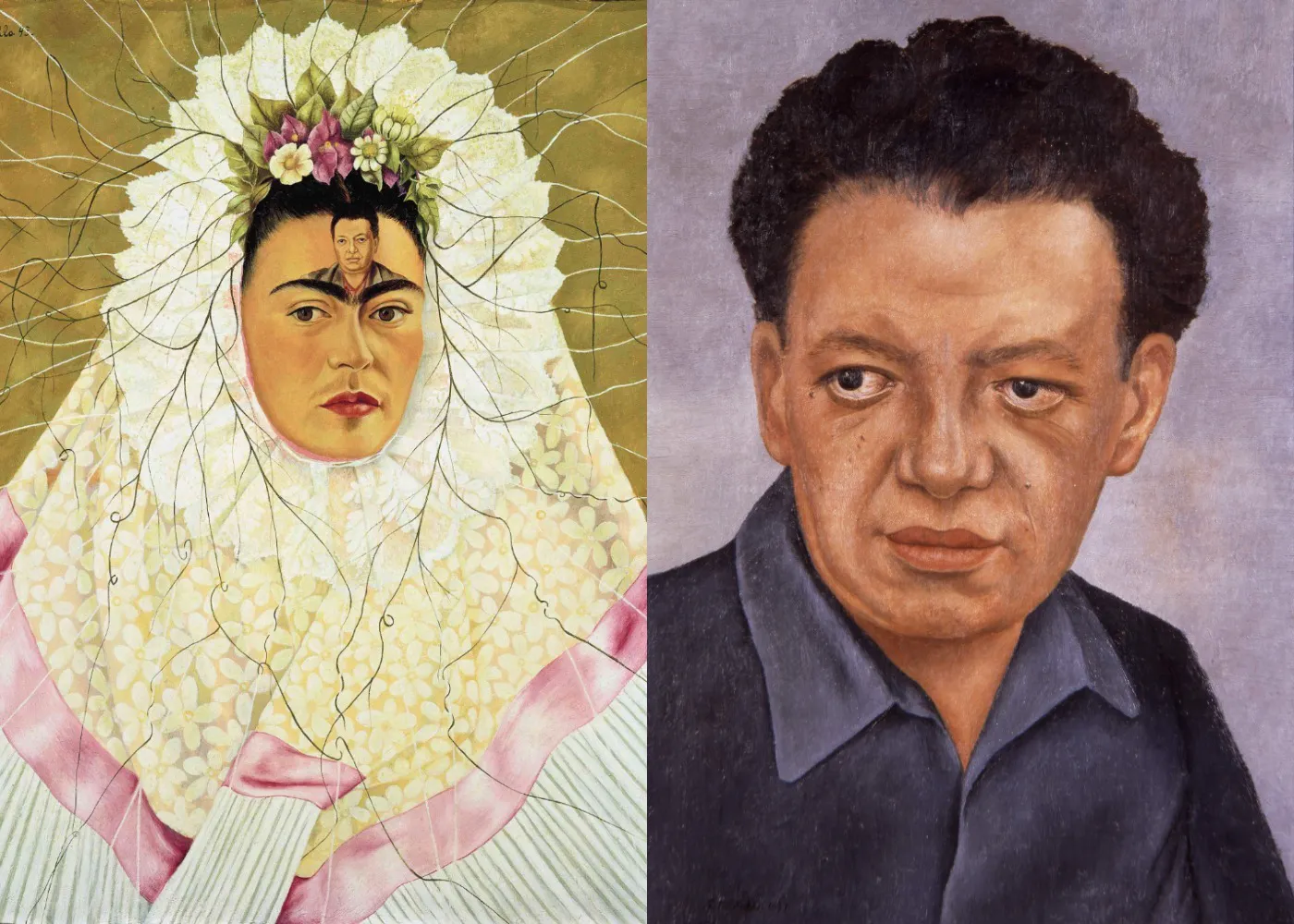Frida and Diego Rivera, two iconic artists of the 20th century, shared an iconic romance whose turbulent relationship and artistic visions reflect political and social upheavals at that time. Both were passionate about Mexican cultural identity as well as art’s role in social transformation; their marriage lasted from 1929 until 1954 (with an brief separation in 1939), marred by love, betrayal, pain and creativity – and ultimately they went their separate ways in 1939.
Their Early Encounters and Marriage

Frida Kahlo and Diego Rivera first met in 1922 when she was 15 and he was 37, both working on mural projects at her school. Kahlo was struck by Rivera’s talent and charisma, yet did not experience romantic feelings for him until 1927 when they reconnected through their shared membership in the Mexican Communist Party (MCP).
Kahlo had experienced severe injuries due to a bus accident in 1925 that had caused severe bodily harm as well as long-term chronic pain; Rivera found comfort from this mutual understanding through this political party affiliation. She turned to painting as an outlet for both physical and emotional trauma, showing some of her works to Rivera who praised their unique quality and encouraged her to pursue an art career.
Rivera and Kahlo married against the wishes of Kahlo’s parents who described them as the “elephant and dove”, due to their physical and temperamental differences – Rivera being tall, stout and outgoing while Kahlo being petite delicate and introverted. Rivera led the Mexican muralist movement, creating public art to showcase history and ideals from Mexico’s Revolution; Kahlo typically painted self-portraits or still lifes that explored her personal identity or emotions.
Their Artistic and Political Collaborations
Frida Kahlo and Diego Rivera shared an understanding of art as an effective means of social change, while simultaneously using it to express their political beliefs and express themselves creatively. They were both active members of the Communist Party, supporting various causes and movements such as Mexican Revolution, Spanish Civil War and workers’ rights.
They traveled extensively both within Mexico and internationally for artistic commissions and exhibitions as well as meeting other influential artists and intellectuals – visiting San Francisco, New York, Detroit, Paris, Moscow and Havana among many other places.
They often captured their experiences and impressions of these locations through paintings, as well as views about cultural and economic differences between Mexico and the US. Rivera displayed his artwork at the Detroit Institute of Arts to depict industrial development and social problems of American cities, while Kahlo depicted her naturalistic approach against mechanical environments of United States cities in her Self-Portrait on the Borderline between Mexico and United States (self-portrait on borderline between mexico and United States).
Their Personal Struggles and Conflicts
Frida Kahlo and Diego Rivera’s relationship was fraught with difficulty due to personal struggles and conflicts. Each had numerous affairs that caused jealousy and resentment between them. Rivera was most notoriously involved with Kahlo’s younger sister Cristina and eventually led Kahlo to cut off her hair and divorce Rivera in 1939; though they eventually reconciled a year later but remained unstable and open relationships.
Kahlo experienced various health complications, such as miscarriages, infections and surgeries that exacerbated her physical and emotional state. She often expressed this through painting depictions depicting herself bleeding or brokenness – often with her art work portraying these scenes of sorrow.
Rivera faced both criticism and censorship for his political views and murals containing controversial portraits of Lenin at Rockefeller Center, New York; these murals would later be destroyed; in addition, Rivera struggled with his artistic identity and legacy after Kahlo’s work became widely recognized and more people began paying attention.
Their Legacy and Influence
Frida Kahlo and Diego Rivera left behind an extraordinary legacy and impact, both as individual artists and as partners in life and art. Their paintings are widely admired around the world, inspiring generations of artists and activists. Additionally, their relationship has been chronicled in numerous books, films and documentaries about its love, passion and drama; their former home/studio in Mexico City known as The Blue House has now been turned into a museum that displays personal belongings as well as artwork from both individuals – further compelling and challenging the public to explore all that human experience and expression has to offer us all.
Stay tuned to Centralfallout for the latest scoops and updates of Latest News, Trending News, Technology News, World News and Entertainment News.


